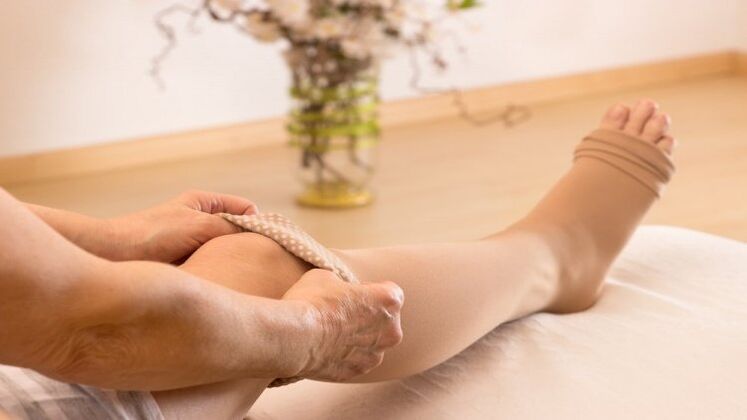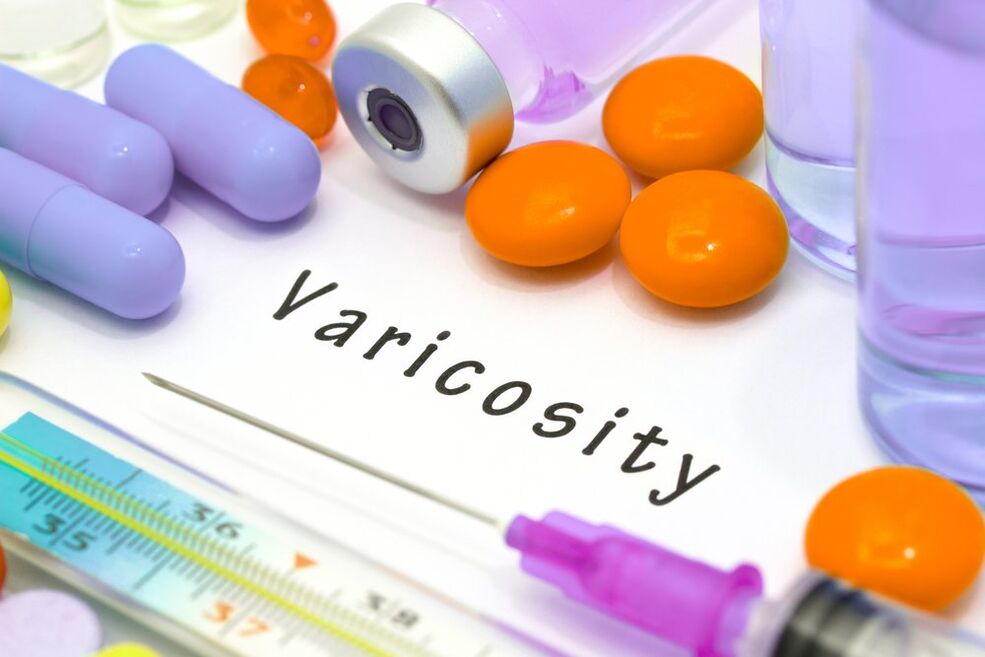Tortuous veins appearing on the legs with knots and tubercles in a young and beautiful woman is a serious problem, not only psychological, but also medical. Varicose veins are classified as serious pathologies among women of different ages; up to 20-30% of women suffer from them, from young to old and senile age. An enlarged and deformed vein is not able to fully perform its functions of transporting blood from tissues to the heart. The blood inside such a vein stagnates, thickens, which provokes blood clots and blockages of blood vessels, threatens with unpleasant symptoms and complications.
Unlike other vessels of the body, the vein is arranged in a special way: the blood flow in it is carried out due to a certain wall tone, the presence of valves, contraction of tissues outside the vessel and the suction effect from the working chambers of the heart. If initially the walls of the vein are defective, too weak, and the muscular corset around them is poorly trained, this predisposes to stagnation of blood. With prolonged standing or sitting in a stationary position, the blood flows from the limbs worse, which aggravates the situation. Heavy loads, pregnancy, the presence of concomitant pathology worsen the condition of the veins, which requires treatment. If therapy is not started on time, the disease is prone to progression.
Conservative therapy for varicose veins
Naturally, in the initial stages of the process, when varicose veins are expressed very slightly, only the first symptoms are observed or there are risk factors for varicose veins (predisposition, pregnancy, static work, stress on the legs, obesity), you can start with conservative and preventive measures. The complex of treatment will consist of non-drug effects and medicines. First of all, nutrition correction is needed, especially for those women who are overweight. In addition, it is worth reducing in the diet substances that negatively affect venous tone and blood composition. With varicose veins, it is worth making the following adjustments to your diet:
- Avoid alcohol in any form.
- Remove pepper, spicy foods and seasonings from your diet.
- Reduce salt intake.
- Remove pickled, smoked, fatty and fried foods from the diet.
- Enrich the diet with products with ascorbic acid.
- Eat more fiber.
- Eat cherries, currants, sweet cherries, rose hips, blueberries, they contain a lot of substances that tone the vascular wall.
You need to eat in small portions at least 4-5 times a day, only freshly prepared dishes. Do not completely abandon animal fats and carbohydrates. Fats help in the restoration of the vascular wall, carbohydrates provide energy to the body. But their number should be reduced.
It is important to stop smoking, as tar negatively affects the vascular wall, and carbon dioxide slows down blood flow, which increases the risk of thrombosis and complications of varicose veins.
Compression for varicose veins

For the prevention of varicose veins and the treatment of veins in the legs, doctors widely recommend wearing compression underwear - these are tights, stockings, leggings. The use of such products is shown for women with risk factors for varicose veins, especially during pregnancy. Such knitwear is also shown to those who have initial manifestations of pathology. In severe stages of the disease, compression hosiery will be used as a prevention of postoperative complications.
Underwear is put on in the morning, when the veins are not yet completely filled with blood and are not overstretched, there is no swelling. The main principle of its action is to increase pressure on the walls of the veins by creating a pressure difference from the foot to the thigh. This helps to narrow the lumen of the vein and keep it in good shape, actively pushing blood while moving from the fingertips to the groin and heart.
Treatment of veins in the legs with drugs

Active advertising in the media of remedies for varicose veins has formed in many women the wrong idea about the treatment of this pathology. Medicines in the form of external and internal remedies are not a panacea for the disease, and they cannot completely eliminate varicose veins. Medicines, for the most part, alleviate symptoms and stop the progression of the disease, if used in combination with all other methods.
Treatment of veins in the legs involves the use of venotonics in the form of ointments and gels. They penetrate shallowly and, in combination with a massage of the lower extremities, when applied, they can somewhat relieve heaviness in the legs and swelling. They are used only for prevention or at the earliest stages of pathology, with changes in superficial veins. Deep veins for these drugs are unattainable, and they will not be able to affect their condition in any way.
It is often recommended to use topical treatments for leg veins in combination with oral medications. Tableted venotonics are used for deep vein damage. They contain special bioflavonoids, a complex of vitamins and substances that improve blood circulation through the vessels, have an anti-inflammatory and tonic effect. Treatment of veins in the legs with the help of these funds involves long courses of admission, which last from 2-3 months to a year.
In the course of complex treatment, in preparation for surgical therapy or for the prevention of dangerous complications, anticoagulant drugs are applicable - direct and indirect. They significantly reduce the risk of venous thrombosis. Preparations can be included in the composition of combined agents for local and systemic use.
The course of treatment may include anti-inflammatory nonsteroidal drugs that eliminate pain and suppress inflammatory reactions inside the veins.
It is important to remember that all drugs and methods of treatment should be selected only with a doctor, based on your specific situation and the severity of changes in the veins.






























